Content
The plant known as reeds has been used for centuries. It was used to make medicines, rugs, and shopping bags. The so-called reed belt was laid along the perimeter of the foundation. The healing properties and rules for the use of reeds were also taken into account in cooking. Its use is also relevant in modern industry.
What does the reed look like and where does it grow?
The perennial is a herb that belongs to the Sedge family and the Kamysh genus. It has 52 species and is also sometimes mistakenly called reed or cattail. A coastal plant can be 1 meter or more in height.
The long root is horizontal. The cylindrical stems are triangular. Broadly linear, spreading leaves are narrowed, and reed flowers are formed by complex inflorescences.
The reed has fruits that look like triangular nuts or a brown ear. Flowering is celebrated in early summer. The plant can be found in humid places:
- swamp;
- ditches;
- shores of reservoirs.
Reed grows on the territory:
- North America;
- Eurasia;
- New Zealand;
- Australia.
The following types of climate are suitable for the plant:
- tropical;
- subtropical;
- moderate.
Reed panicles, the photos of which are indicated below, can be seen on personal plots. The plant is cultivated for the purpose of landscaping artificial reservoirs.
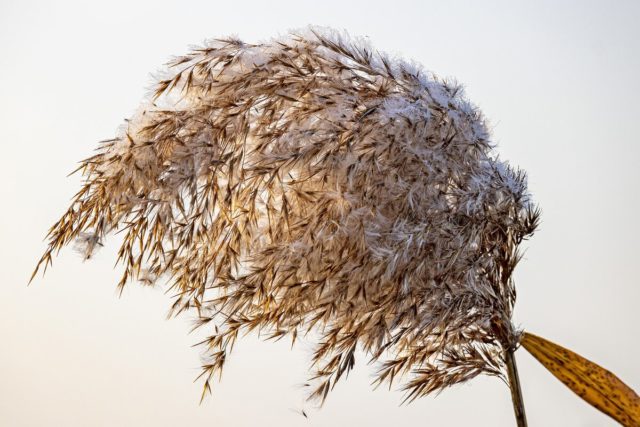
The chemical composition of reeds
The herb is widely used in folk medicine. Reed is distinguished by medicinal properties, which are due to its composition:
- vitamin C;
- retinol;
- lignin;
- cellulose;
- carbohydrates;
- proteins;
- starch;
- glycerol;
- tannins;
- Sahara;
- lactic acid.
The unique composition of the plant allows it to be used for prophylactic and therapeutic purposes.
What it treats and how is reed useful for humans
It is noteworthy that the herb is not used in official medicine. Its use is carried out in herbal medicine. Plant-based preparations have the following effects:
- anti-inflammatory;
- diaphoretic;
- antiseptic;
- astringent;
- diuretic;
- bactericidal;
- antiscorbutic;
- wound healing;
- hemostatic;
- antifebrile.
Useful properties of reeds allow:
- lower the temperature;
- improve kidney function;
- eliminate puffiness;
- strengthen the immune system;
- normalize blood glucose.
The herb is used to treat or prevent the following pathologies:
- burns;
- enteritis;
- nausea;
- swelling;
- dysentery;
- painful and profuse discharge during menstruation;
- decreased immunity.
The use of reeds in traditional medicine
There are many ways to use the plant. Their use in different dosage forms depends on the indication.
Infusions
Herbalists recommend drinking a diuretic from the leaves. It is useful for kidney pathologies and swelling.It is necessary to pour 50 g of crushed leaves and stems into a thermos. Raw materials are poured with boiling water. After 1 hour, the infusion is filtered and drunk 3 times a day, 200 ml.
Reeds can be used to prevent heart pain. Several inflorescences are steamed with a liter of boiling water and 1-2 mint leaves are added. The product is ready for use in 2 hours.
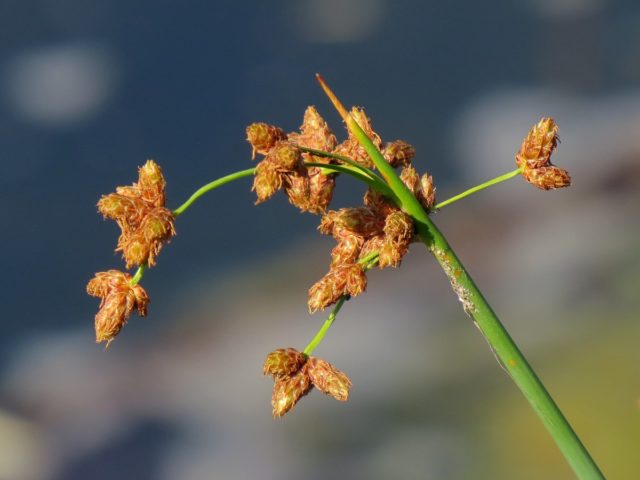
Decoctions
The tool helps to strengthen the immune system. Reed root (1 kilogram) is cleaned, crushed and poured into a saucepan. Raw materials are poured with boiling water and simmered over low heat for 1 hour. Then the liquid is poured into a separate container. The roots are again poured with water and boiled. After an hour, both liquids must be combined and brought to a boil. It is necessary to take 200 ml of the product per day after preliminary filtering.
Colitis can be treated with decoctions. Dry and finely chopped roots (15 g) are poured with boiling water (200 ml). They are tormented over low heat, cooled and filtered. The drug is drunk 1 tablespoon 5 times a day.
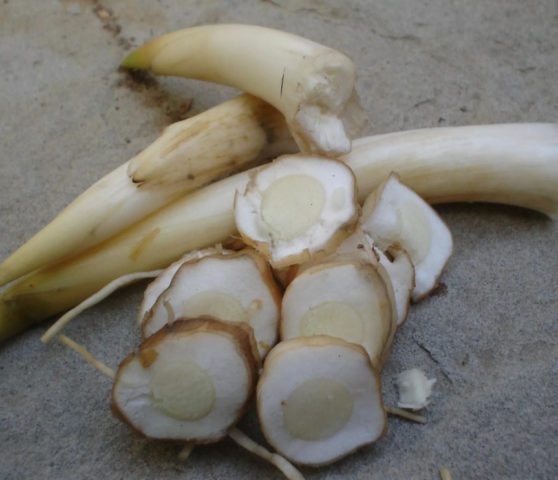
Compresses
A wound healing agent can be made by taking fresh leaves. They are crushed using a meat grinder or blender. The gruel must be soaked in a sterile bandage and applied to the wound.
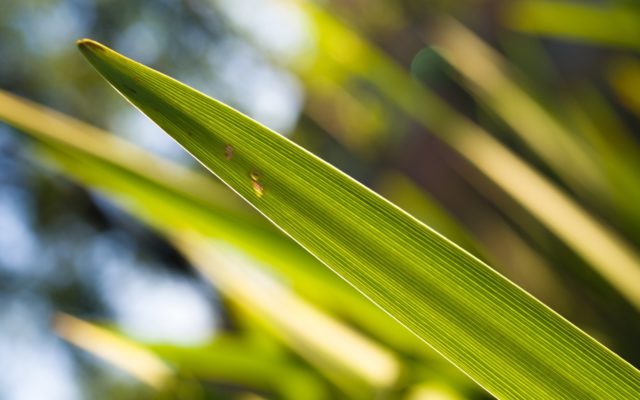
Ointment
A remedy for external use is used in violation of the integrity of the skin and their inflammation. One of the indications is light burns. In order to manufacture the dosage form, it is necessary to mix the cob fluff and melted butter in equal proportions until uniform.
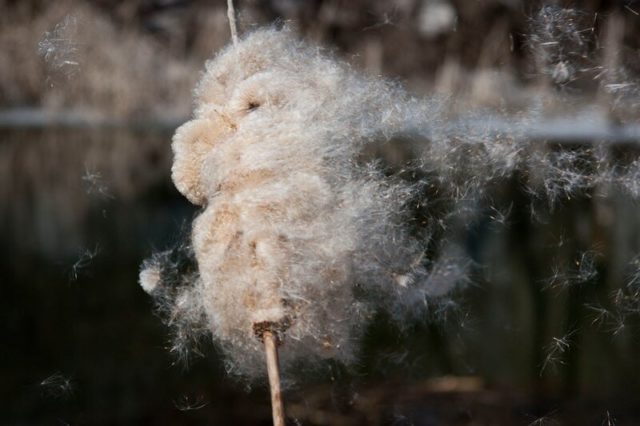
Tea
The dosage form is intended for use in the complex therapy of cardiac dyspnea. In order to make the product, it is necessary to take the flowers collected in September. Raw materials are poured into a glass container and 300 ml of boiling water are poured. The tea is ready to drink in an hour. It is necessary to take 5 sips of the strained drug. The interval between doses is 4 hours.
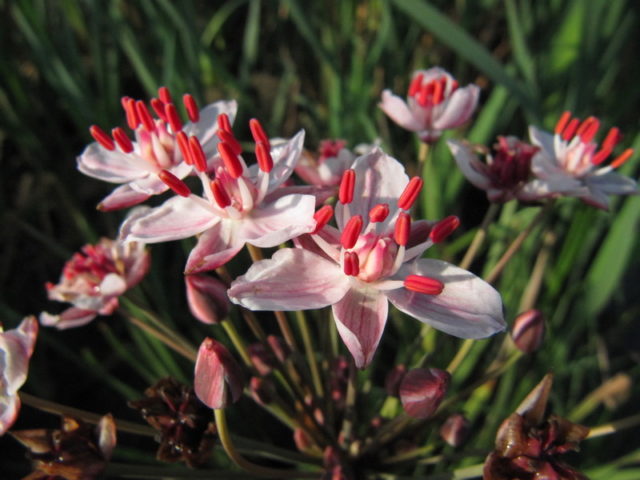
Contraindications
Reed is beneficial to humans. However, its use is advisable after consultation with a specialist. This is due to the presence of restrictions on the use.
The following contraindications are called, in which the plant is not included in therapy:
- gout;
- phlebeurysm;
- hepatosis;
- thrombophlebitis;
- period of pregnancy or lactation.
Reeds can provide both health benefits and harm. Long-term use of remedies made from a medicinal plant causes constipation.
Collection and procurement
Reed roots are suitable for consumption as food. The rhizome is used in the manufacture of a coffee substitute. Reed roots are also considered to be an ideal raw material used to make flour.
To collect raw materials, you need to give preference to environmentally friendly places. It is not recommended to choose water bodies that are the habitat of birds and animals.
Reed panicles are used in folk medicine. Rhizomes and leaves, which are harvested in early summer, are suitable for treatment. In general, it is permissible to collect raw materials until autumn. Leaves should be spread out in a thin layer and dried thoroughly. Optimal conditions are a dark, dry and well-ventilated place.
The roots are harvested in early autumn. They are dug up, washed and cut into small pieces. The roots are dried in a dryer. A suitable temperature is 50 ° C.
Flowers are also suitable for making medicinal products. They are cut during the active flowering period.
Conclusion
The healing properties and rules for using reeds are important to consider when using a medicinal plant as part of a complex therapy. It has practically no contraindications, which is a significant advantage. Various parts of the herb can be used to make useful products. Reed is effective for dysfunction of the gastrointestinal tract, cardiovascular and nervous systems. The plant is widely used to create compresses and ointments.

